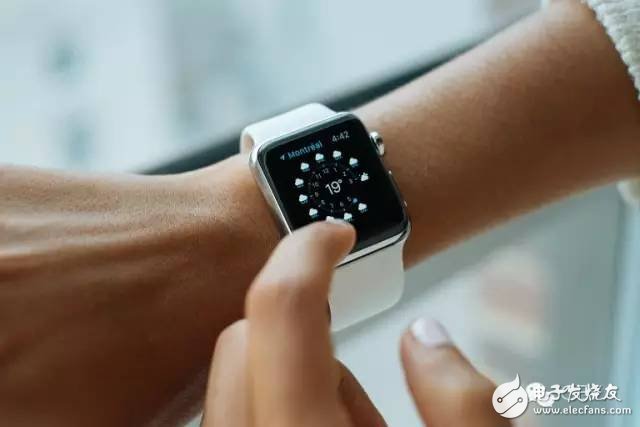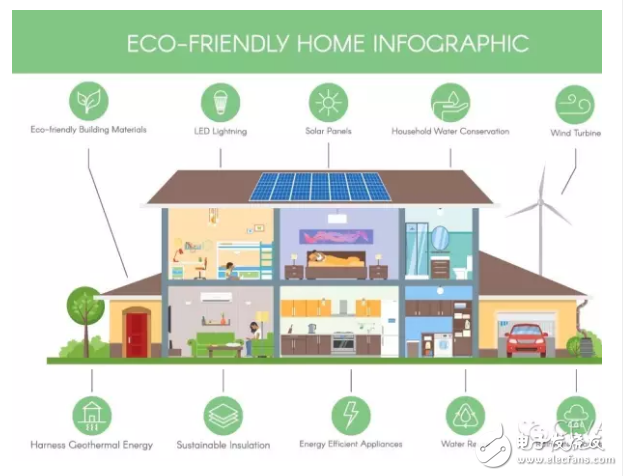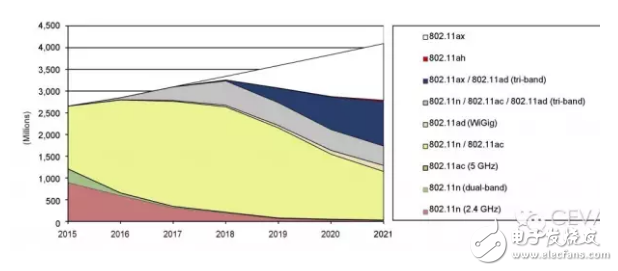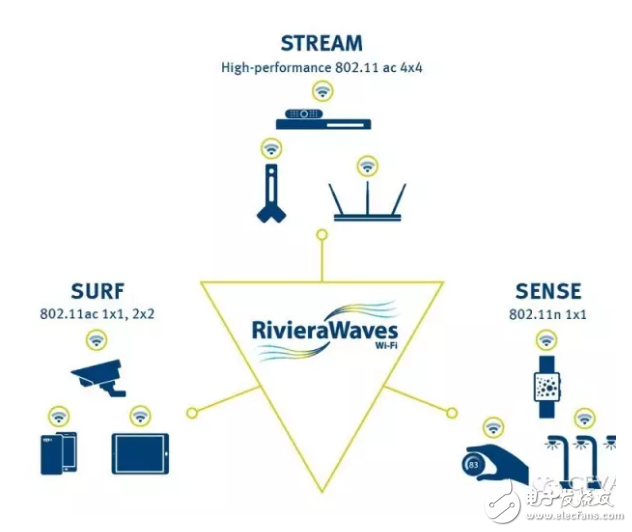The number of devices connected to the Internet of Things (IoT) is rapidly increasing and there is no sign of a slowdown. There are many communication standards for IoT connections, of which Bluetooth and Wi-Fi are the two most important to date. By 2020, these two technologies are expected to connect 30 billion devices, and Wi-Fi will take the lead. But Wi-Fi is not just a simple standard, it has a lot of styles, and this poses a challenge: How do you design a Wi-Fi solution that will help the Wi-Fi standard last for years to come? In this post, I will introduce some of the growing markets that use Wi-Fi and how to develop a low-power, high-performance Wi-Fi solution that meets future needs and deliver it to today's Internet of Things. market. Smart home, smart body: Wi-Fi is expanding in the Internet of Things IoT devices are becoming more and more personalized, from smart cities, smart homes, to smart robots and smart people. Wearable devices are becoming more and more popular, placing higher demands on portability, energy consumption, and especially low-cost components. Wearables are expected to grow at a compound rate of 50% per year, surpassing smartphones and tablets, making them the fastest-growing consumer technology. Another huge potential growth area is smart home. It is estimated that each household will have approximately 15 nodes, and the current market for more than 600 million households is equivalent to more than 10 billion opportunities. The potential of Wi-Fi is huge, and the audio and video streams in multiple rooms, surveillance cameras and smart home appliances are clearly the perfect match for Wi-Fi as its main communication channel. With exciting new equipment, like the universal remote control that controls everything except your child, TV and OEM remotes are becoming the largest Wi-Fi market in the smart home sector. For SoCs that support well-designed Wi-Fi, this growth is a good opportunity. To drive design success, solutions must score high on all sides: low power, high performance, user experience, fast time to market, and low cost. However, these are not enough! Due to the complexity and fragmentation of many Wi-Fi standards, a powerful solution must also be able to predict the future and support any standard to be a pioneer. Wi-Fi complexity and dispersion Wi-Fi is a complex standard. This standard is specified by IEEE 802.11 as a series of implementations of Media Access Control (MAC) and Communication Physical Layer (PHY) on different frequency bands. Older versions, such as 802.11a, 802.11b, and 802.11g, are being phased out, and now ubiquitous 802.11n is being improved for a variety of new usage scenarios. The new design will attempt to predict future forerunners from changes in 802.11ac, 802.11ad (WiGig), 802.11ah (HaLow), 802.11ax, and other standards. With the expansion of the format, it is now more difficult to determine which style to start with. A software approach can alleviate these challenges by first satisfying several styles and delaying the decision to fully optimize. Total shipments of Wi-Fi chipsets by agreement (Source: ABI Research) Another important factor is interoperability. Good design needs to be able to interact with third-party solutions to provide the best user experience, which can lead to frequent problems and limited third-party products. To solve this problem, you need to use a flexible method to deal with less than ideal places and patch the software. Therefore, flexibility is obviously very important. But using a hardware solution still has its advantages. By adapting the hardware to specific standards, the modem can achieve the most efficient energy utilization and optimal area. The other side of the coin is that there is no flexibility and the zoom is limited. In software-defined modems (SDM), the area and power consumption are slightly increased, but the level of flexibility is very high and can support multiple standards. In the early design phase, the negative impact of standard uncertainty is negligible compared to the flexibility it provides. SDM solution with flexibility to meet future needs In the IoT space, energy consumption is key. Especially for wearable devices and ready-to-wire devices. To solve this problem, CEVA's RivieraWaves Wi-Fi platform supports all protocol-level low-power features such as Wi-Fi Multimedia Power Save (WMM-PS). In addition, our DSPs use a variety of methods to minimize energy consumption. For efficient power gating, multiple power domains are used so that most designs can be turned off in low power mode. To maintain peak performance and user experience, the wake-up time is minimized by keeping a small amount of memory. CEVA's friendly design enables automatic clock gating in the integrated phase. These features make our solution the industry's smallest and most energy-efficient Wi-Fi IP platform. Our solution also reduces integration complexity by providing a fully integrated subsystem. This supports simple and fast integration into the system on a chip, while helping to freely evolve and differentiate. Our platform is a complete solution, including, for example, on a CEVA-TeakLite-4 based platform, we can use the same architecture to support 802.11n, 802.11ac, 802.11ah (HaLow), 802.11ax (road map) . By using the same MAC, only the PHY is replaced to switch between different models. Our Wi-Fi SDM is also integrated into our CEVA-Dragonfly multimode communication solution. In addition to Wi-Fi, the Dragonfly platform supports different wireless standards such as 802.15.4g, Sigfox, LoRa, LTE Cat M, NB-IoT, GPS and other standards. We are saleing Touch screen for DMC,provides the product information. Touch screen for DMC Touch Screen For Dmc,Touch Screen For Dmc Replacement,Touch Panel For Dmc GUANGZHOU VICPAS TOUCH TECHNOLOGY CO.,LTD , https://www.touchsuppliers.com



Touch screen for DMC are widely used for medical and industrial equipment, research shows, machinery equipment, industrial control, man-machine interface, industrial automation integrated workstation, POS, CNC etc. we have a lot of Touch screen for DMC, standing some of our inventory stock.
May 14, 2021